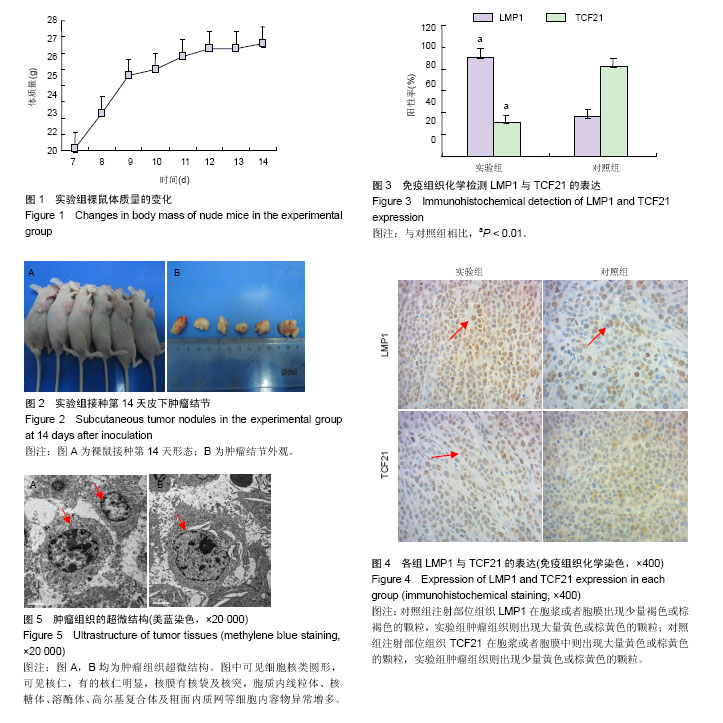| [1] Bian ZY, Fan QM, Li G, et al. Human mesenchymal stem cells promote growth of osteosarcoma: involvement of interleukin-6 in the interaction between human mesenchymal stem cells and Saos-2. Cancer Sci. 2010;101(12):2554-2560.[2] Maitra B, Szekely E, Gjini K, et al. Human mesenchymal stem cells support unrelated donor hematopoietic stem cells and suppress T-cell activation. Bone Marrow Transplant. 2004; 33(6):597-604.[3] Aboody KS, Bush RA, Garcia E, et al. Development of a tumor-selective approach to treat metastatic cancer. PLoS One. 2006;1(1):e23-e23.[4] Nakamura K, Ito Y, Kawano Y, et al. Antitumor effect of genetically engineered mesenchymal stem cells in a rat glioma model. Gene Ther. 2004;11(14):1155-1164.[5] Studeny M, Marini FC, Dembinski JL, et al. Mesenchymal stem cells: potential precursors for tumor stroma and targeted-delivery vehicles for anticancer agents. J Natl Cancer Inst. 2004;97(7):541-542.[6] Clarke MF, Dick JE, Dirks PB, et al. Cancer stem cells- Perspectives on status and future directions: AACR Work-shop on cancer stem cells. Cancer Res. 2006; 66(19):9339-9344.[7] Houghton J, Stoicov C, Nomura S, et al. Gastric cancer originating from bone marrow-derived cells. Science. 2004; 306:1568-1571.[8] Takaishi S, Okumura T, Tu S, et al. Identification of gas-tric cancer stem cells using the cell surface marker CD44. Stem Cells. 2009;27(5):1006-1020.[9] 吴高峰,刘喜平,杨柏林,等.胃癌微环境对大鼠BMSCs形态、生长及CD34、CD44表达的影响[J].中国组织工程研究,2016,20(14): 2040-2045.[10] 陈碧玉,唐以军.非小细胞肺癌组织中TCF21的表达及意义[J].浙江临床医学, 2014(11):1709-1710. [11] 陆晓,冼磊.TCF21基因对人肺癌A549细胞裸鼠成瘤的影响[J].实用医学杂志,2016,32(8):1226-1229. [12] Karam SM, Leblond CP. Identifying and counting epithelial cell types in the “corpus”of the mouse stomach. Anat Rec. 1992;232(2):231-246.[13] Mills JC, Andersson N, Stappenbeck TS, et al. Molecular characterization of mouse gastric zymogenic cells. J Biol Chem. 2003;278(46):46138-46145.[14] Walker MR, Patel KK, Stappenbeck TS. The stem cell niche. J Pathol. 2009;217(2):169-180.[15] Laconi E. The evolving concept of tumor microenvironments. Bioessays. 2007;29(8):738-744.[16] Monack D M, Mueller A, Falkow S. Persistentbacterial infections: the interface of the pathogen and the host immune system. Nat Rev. 2004;2(9):747-765.[17] Oh JD, Kling-Bäckhed H, Giannakis M, et al. Interactions between gastric epithelial stem cells and Helicobacter pylori in the setting of chronic atrophic gastritis. Curr Opin Microbiol. 2006;9(1):21-27. [18] Ikeda F, Doi Y, Yonemoto K,et al. Hyperglycemia increases risk of gastric cancer posed by helicobacter pylori infection: a population-based cohort study. Gastroenterology. 2009; 136(4):1234-1241.[19] Figueroa JD,Terry MB, Gammon MD, et al. Cig-arette smoking,body mass index,gastro-esophageal reflux disease,and non-steroidal anti-inflammatory drug use and risk of subtypes of esophageal and gastric cancers by p53 overexpression. Cancer Causes Control. 2009;20(3): 361-368.[20] Hozyasz KK. Promissing role of probiotics in prevention of smoking-related diseases. Przeglad Lekarski. 2008;65(10): 706-708.[21] Brenner H, Rothenbacher D, Arndt V. Epidemio-logy of stomach cancer. Methods Mol Biol. 2009;472:467-477.[22] Ogasawara N, Tsukamoto T, Inada K, et al. Frequent c-Kit gene mutations not only in gastrointestinal stromal tumors but also in intersti-tial cells of Cajal in surrounding normal mucosa. Cancer Lett. 2005;230(2):199-210.[23] Gumucio DL, Fagoonee S, Qiao XT, et al. Tissue stem cells and cancer stem cells: potential implications for gastric cancer. Panminerva Med. 2008;50(1):65-71.[24] Leedham SJ, Schier S, Thliveris AT, et al. From gene mutations to tumours-stem cells in gastrointestinal carcinogenesis. Cell Proliferation. 2005;38(6):387-405. [25] Heukamp L C, Thor T, Schramm A, et al. Targeted expression of mutated ALK induces neuroblastoma in transgenic mice. Sci Transl Med. 2012;4(141):4892-4896. [26] Jones DL, Wagers AJ. No place like home:anatomy and function of the stem cell niche. Nat Rev Mol Cell Biol. 2008; 9(1):11-21.[27] 王珏,沈雁,张俊玲,等.CD44在不同肿瘤细胞表面阳性表达率的实验研究[J].药学研究,2014,33(2):63-67.[28] Ugarte DAD, Alfonso Z, Zuk PA, et al. Differential expression of stem cell mobilization-associated molecules on multi-lineage cells from adipose tissue and bone marrow. Immunol Lett. 2003;89(2-3):267-270.[29] Jang BI, Li Y, Graham DY, et al. The role of CD44 in the pathogenesis, diagnosis, and therapy of gastric cancer. Gut Liver. 2011;5(4):397-405.[30] Lobo NA, Shimono Y, Qian D, et al. The biology of canc-er stem cells. Annu Rev Cell Dev Biol. 2007;23:675-699.[31] 王萍,张庆,杨金凤,等.LMP-1在胃癌和相应癌旁组织中的表达[J].中国微生态学杂志,2007,19(3):263-267.[32] Funato N, Ohyama K, Kuroda T, et al. Basic helix-loop-helix transcription factor epicardin/capsulin/Pod-1 suppresses differentiation by negative regulation of transcription. J Biol Chem. 2003;278(9):7486-7493.[33] Richards KL, Zhang BL, Sun M, et al. Methylation of the candidate biomarker TCF21, is very frequent across a spectrum of early-stage nonsmall cell lung cancers. Cancer. 2011;117(3):606-617.[34] Arab K, Smith LT, Gast A, et al. Epigenetic deregulation of TCF21 inhibits metastasis suppressor KISS1 in metastatic melanoma. Carcinogenesis. 2011;32(10):1467-1473.[35] Ye YW, Jiang ZM, Li WH, et al. Down-regulation of TCF21 is associated with poor survival in clear cell renal cell carcinoma. Neoplasma. 2012;59(6):599-605.[36] Jie W, Gao X, Wang M, et al. Clinicopathological significance and biological role of TCF21 mRNA in breast cancer. Tumour Biol. 2015;36(11):8679-8683.[37] 李受南,冼磊,吴正球,等.TCF21、Bax在非小细胞肺癌中的表达及临床意义[J].中国继续医学教育,2015,27(7):69-70.[38] 张辉,郭艳,尚超,等.肾癌中TCF21与KISS-1的表达及调控关系[J].现代肿瘤医学,2013,21(6):1271-1273.[39] 胡松,阳诺,陈铭伍,等.抑癌基因TCF21对肺癌细胞A549增殖、凋亡和迁移的影响[J].中国肺癌杂志,2014,17(4):302-307.[40] 何文武,胡松,陈铭伍,等.非小细胞肺癌TCF21基因表达及其启动子区甲基化的研究[J].中华胸心血管外科杂志,2013,29(1): 24-27.[41] Costa VL, Rui H, Danielsen SA, et al. TCF21 and PCDH17 methylation: an innovative panel of biomarkers for a simultaneous detection of urological cancers. Epigenetics. 2011;6(9):1120-1130. |
.jpg)

.jpg)